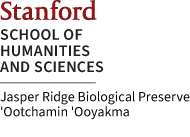Docent Community of Jasper Ridge Biological Preserve recognized with the Stanford Alumni Associates Award of Merit

The birding team surveys with binoculars across a transect. Photo by Dan Quinn.
Since 1975, the docent community of Jasper Ridge Biological Preserve ('Ootchamin 'Ooyakma) has been volunteering to offer natural history research and educational experiences to the public and offer research assistance to many faculty and students of Stanford. After 50 years of excellent service, volunteers were granted the Stanford Alumni Association Award of Merit in honor of outstanding contributions to digitizing, researching, and other efforts that helped to promote the goals of the preserve!
The Stanford Alumni Association Awards of Merit are given each year to outstanding alumni volunteers for exceptional service in the last 18 months. The docents of Jasper Ridge Biological Preserve are a dedicated, knowledgeable, innovative, and enthusiastic community celebrating 50 years of commitment to research, education, and stewardship of the preserve. Many of our docents are Stanford alumni who consistently provide support of our mission. To give a few recent examples, their volunteer work led to the publication of long-term avian research (Wright-Ueda et al. 2023) and digitization of our 5,000+ plant collections which are now accessible to everyone online (see Stanford Report article here).
Jasper Ridge Biological Preserve, an important resource for birds and community science!
Monitoring bird populations at Jasper Ridge Biological Preserve ('Ootchamin'Ooyakma) was first organized in 1979 by docents Bill Clark (Stanford Alum – Bachelor’s Degree 1940 and M.D. 1944) and his partner, Jean Clark. The Clarks were joined by other birders and established a tradition of long-term participation. Since 1979, about 200 people have participated in this community science effort at Jasper Ridge. Six teams of volunteers perform monthly transect surveys and four teams perform point count surveys at the preserve, amounting to hundreds of volunteer-hours every month. Current team leads are Mary Ann Allan, Malia DeFelice, Sally Jackson, Richard Jeffers, Emily Kim, and Maya Xu (Figure 1).

Figure 1. Top left: Julien Ueda resurveying the Blair bird count points for his honors thesis. Photo by Trevor Hebert.
Top middle: Transect E birders on the trail. From left: Sally Jackson, Jan Schachter, Rob Jackson, Karen Greig, Mike Frank, Sara Timby. Photo by Dan Quinn.
Top right: Phil Leighton with a spotting scope. Photo by Dan Quinn.
Bottom left: Transect C bird count team with Maya Xu, Marty Freeland, Andy Huynh, Yuchen Li and Chloe Cheng. Photo by Maya Xu.
Bottom right: Mary Ann Allan and Naomi Goodman doing the monthly Transect A bird count at Jasper Ridge. Photo by Sonny Mencher.
The result is an exceptional long-term record of bird populations at the preserve, which has become an invaluable resource for student and faculty research relating to species diversity, avian conservation, and long-term ecological trends. A recent publication led by Julien Wright-Ueda (docent and Stanford B.S. and M.S. 2022; see Figure 1) along with Professor Rodolfo Dirzo and Stanford alumn Tyler McFadden used the previously collected data. They analyzed 31 years of data and determined the population trends for 66 local bird species. About one third of local bird species showed long-term decline in abundance, and overall, the populations of these species declined by an average of 12%. This paper not only represents a significant contribution to avian science and conservation but also highlights the valuable partnership of scientific research and education among JRBP docents and volunteers, students, and faculty working at Jasper Ridge Biological Preserve.
Oakmead Herbarium at Jasper Ridge: Bringing botany into the digital age
The Oakmead Herbarium at Jasper Ridge Biological Preserve ('Ootchamin'Ooyakma) houses over 5,300 dried plant specimens, which are used for ecological, evolutionary, and systematics research on plants collected throughout the preserve. What makes this herbarium truly special is that it is 100% curated by Jasper Ridge docent volunteers, a team we call the “herbarium crew”. The Herbarium crew walk the preserve weekly, compile botanical resources like the JRBP plant list and invasives list, monitor plants of interest, teach others about plants and the utility of collections, and weed invasive species along the way (Figure 2). The current members are Alice Cummings, Ann Lambrecht, Carl Cheney, Dawn Neisser, Diane Renshaw, John Rawlings, Mary Bernstein, Paul Heiple, Perry McCarty, Rebecca Reynolds, Sara Timby, Teal Derrer (in alphabetical order by first name). Learn more about members of the herbarium here.
In 2023, the collection of vascular plants was fully digitized! This digitization effort was led by docent Dawn Neisser (Stanford Alumna – Bachelor’s Degree 1979; see Figure 2), who imaged and digitized about 80% of all 5,300 specimens. Dawn worked with other Herbarium crew members, Nona Chiariello and other JRBP staff, and Stanford students to ensure each specimen included a high-quality photograph, geographic coordinates, abundance, associated species, soil type, etc.
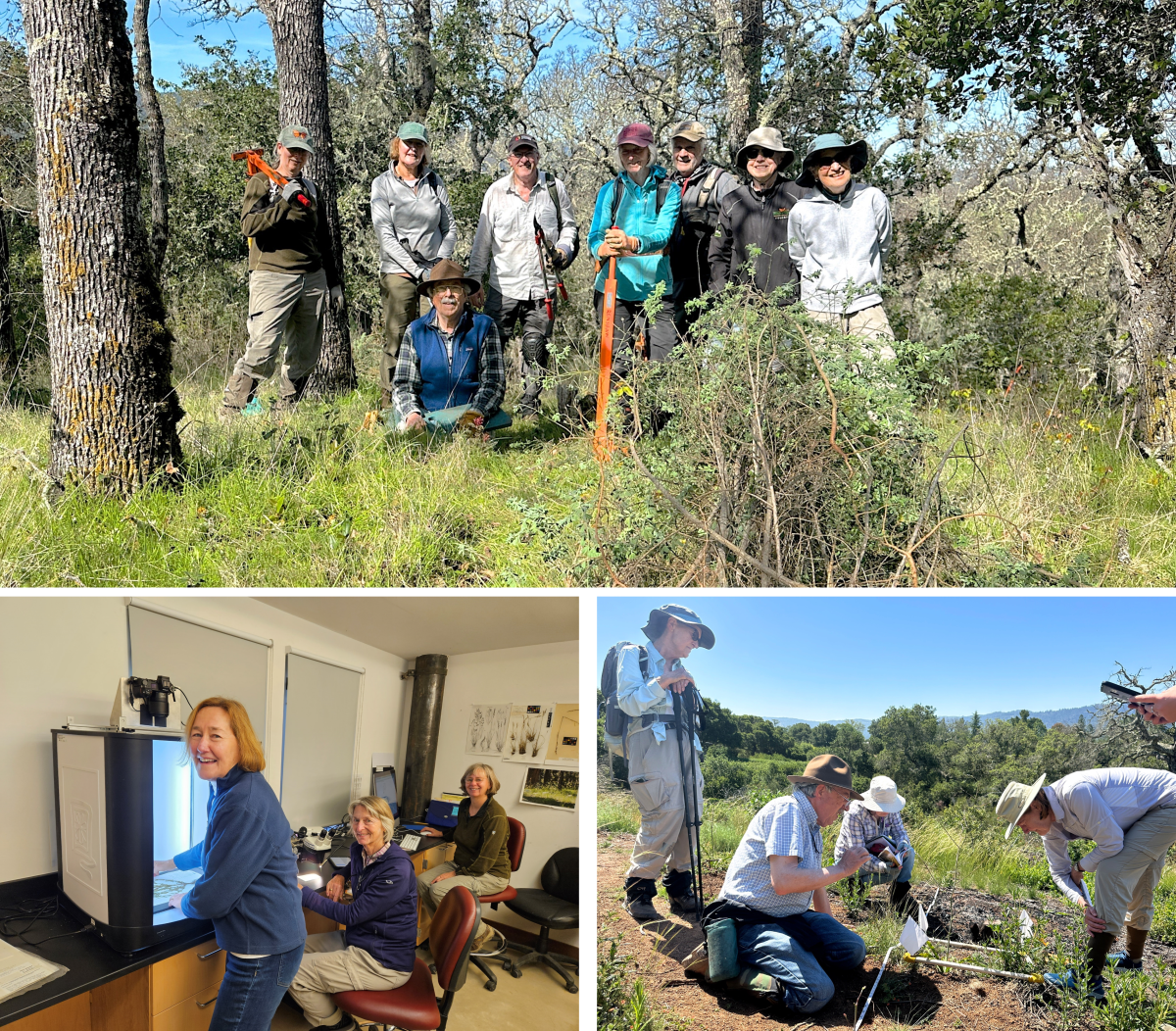
Figure 2. Top: The herbarium crew after pulling 5,000+ invasive plants. Photo by Alice Cummings.
Bottom left: Dawn Neisser places an herbarium specimen in the digitization box, which houses a camera and lights to capture high quality images, while Diane Renshaw and Teal Derrer key specimens. Photo by Adriana Hernandez.
Bottom right: The herbarium crew helps survey vegetation around burn piles. Photo by Alice Cummings.
This effort has put the Oakmead Herbarium online with all of its specimens available for any researcher to explore and download through the Consortium of California Herbaria. If you visit the Oakmead Herbarium, you might see Dawn continuing to digitize new specimens as they are deposited into the herbarium.
A Stanford student, Madeline Hodge, has already started exploring the database to investigate microbiome responses to climate change over time and sampling tissue from the specimens at Oakmead Herbarium. We look forward to hearing the results of this and all other research that leverages these collections!
Other research
So far in 2024, twelve docents supported graduate and undergraduate students with seven research projects. These projects include understanding invasive-native plant competition, assessing pollinator preferences, identifying host plants for parasitic plants, using camera traps to observe behavior of small mammals under shrubs, and evaluating population health of black oak trees. Docents served as research and field assistants helping to collect data, as guides helping to identify populations of interest, and as collectors who harvested seeds for experimentation.
Docents learn natural history and research skills to lead educational tours
Learning practical skills and natural history knowledge for place-based research begins in the field. Community members become docents through completion of a field course, the “Ecology and History of Jasper Ridge”, currently BIO/ESYS 105 taught by Prof. Rodolfo Dirzo. Now in its 50th year (Fig. 4), we have an archive of the hundreds of original projects that students have designed and executed as their course projects (see Figure 3), and an alumni directory page for our affiliates.
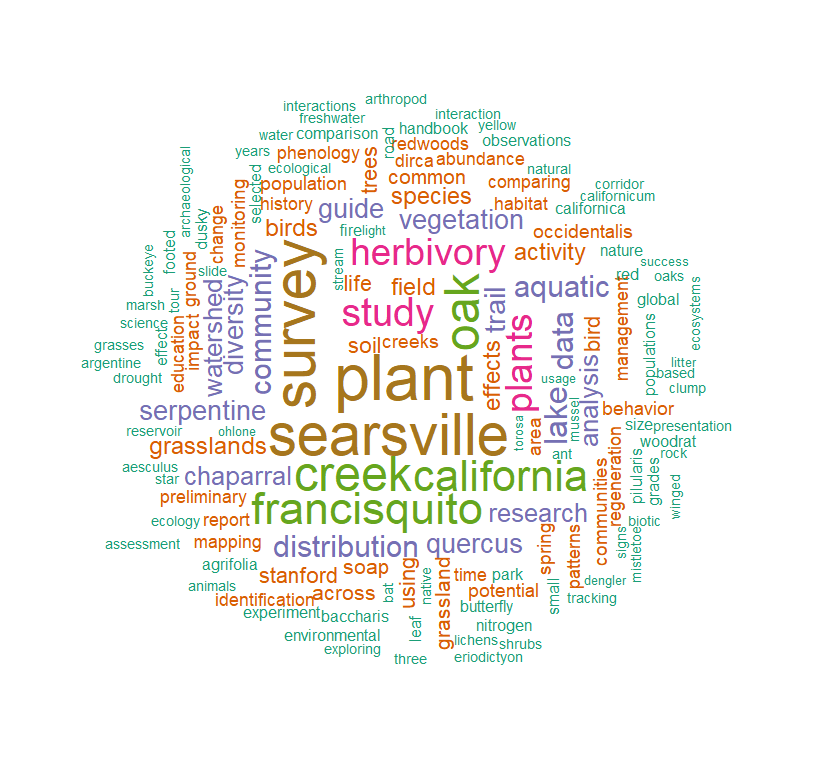
Figure 3. This word cloud was generated from the list of BIO/ESYS 105 project titles, showing the breadth of study systems and interests in our community over the years.
Empowered with the knowledge from the course, our docents then lead natural history and ecology tours for visitors of Jasper Ridge Biological Preserve. They host on average 4,000 visitors annually from Stanford, our San Francisco Bay Area partners, and the public. During the 2022-2023 academic year, docents led educational visits for all eight Stanford schools and SLAC. We had 42 different Stanford-affiliated programs, departments, and student organizations come to the preserve for guided tours – a new record! Our docents also welcomed our partners at seven other colleges and universities, three high schools and middle schools, and 29 other organizations. We resumed even more programming the next year 2023-2024, including serving seven local high schools. A record since the pandemic!
The Continuing Education group at Jasper Ridge also offers programming to our community on an impressive breadth of topics, and is entirely docent-led. The JRBP docent community truly embodies a welcoming, inclusive approach to learning natural history. Dr. Laura Jones, Stanford Alumna, JRBP Docent, and Director of Heritage Services and University Archaeologist, has described it as “ the most generous intellectual community I have known.” (see Figure 4)
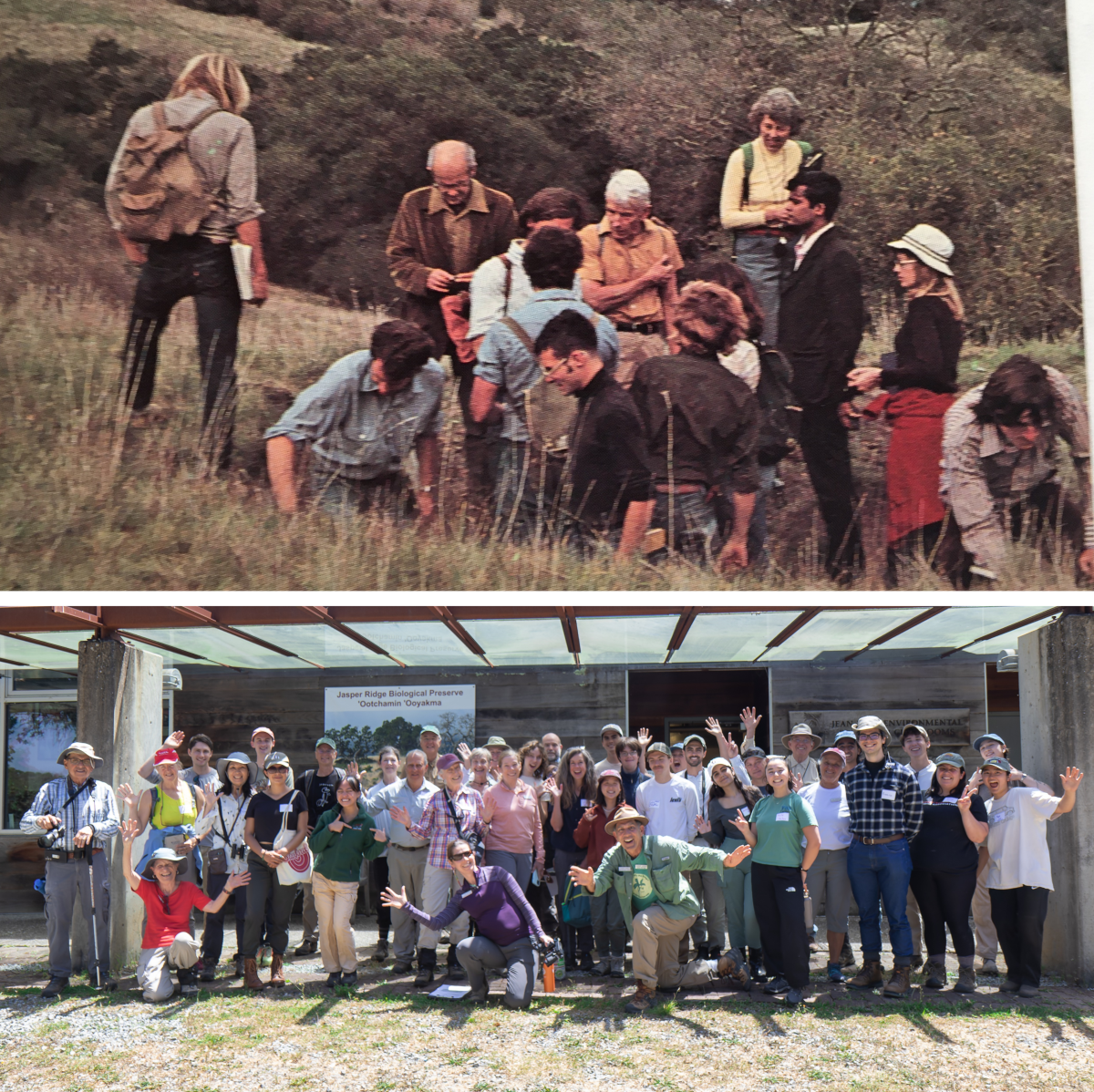
Figure 4. Top: Docent class of 1975 joins a geochemistry class from campus (Ann Lambrecht is the one in the hat). Photo taken from The Stanford Magazine for Spring/Summer 1975. Instructor Herb Dengler is standing (medium-brown shirt, darker brown jacket). Photo from Ann Lambrecht. Bottom: The docent class of 2024 is welcomed by the docent community after new students practiced leading a tour. Photo credit Jorge Ramos and Bob Siegel.
Congratulations to all volunteers of Jasper Ridge Biological Preserve!
The Award of Merit will be presented during the annual Stanford Associates Awards Ceremony, to be held on campus the afternoon of Saturday, March 29, 2025. As two leaders who completed significant accomplishments in the last 18 months, Dawn Neisser and Julien Wright-Ueda will receive the award on behalf of the docent community of Jasper Ridge Biological Preserve.
We congratulate everyone who volunteered their enthusiasm, expertise, and time to help achieve the preserve’s goals to contribute to the understanding of the Earth’s natural systems through research, education, and protection of the preserve’s resources.
The Oakmead Herbarium digitization project was supported by a gift from the Smart Foundation.
By Adriana Hernandez, PhD and Jorge Ramos, PhD
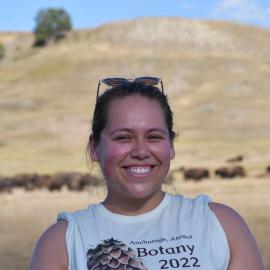 Adriana is the Assoc. Director of Research at Jasper Ridge Biological Preserve ('Ootchamin 'Ooyakma). Read about her background here.
Adriana is the Assoc. Director of Research at Jasper Ridge Biological Preserve ('Ootchamin 'Ooyakma). Read about her background here.

